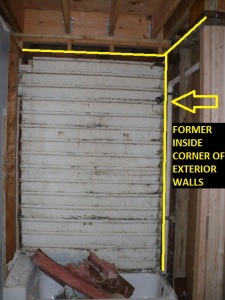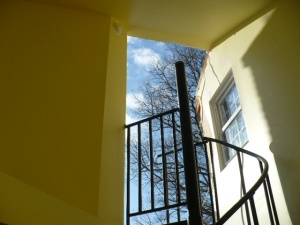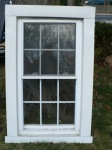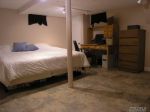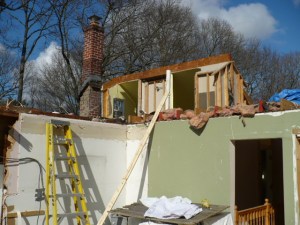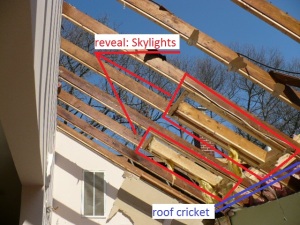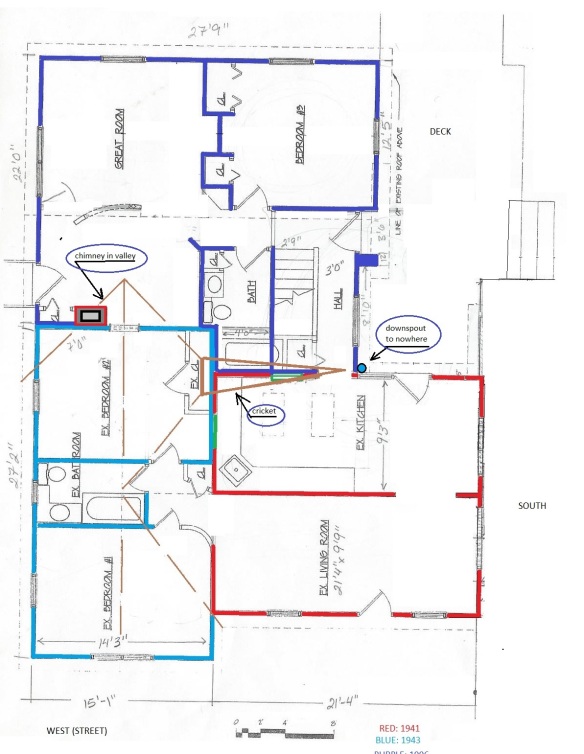The red arrow in the below floor plan is in the Rec Room Bathroom and shows direction of sight in the following photos.
I don’t have any ‘before’ pictures of the Rec Room Bath. The first is after the new second floor had been installed. The second photo is after we started demo’ing it.
I’ve written previously about the leaking roof cricket above the Rec Room Bathroom. Here. The back wall, where the tub and shower were, had mold and water damage that made its way to the floor under the tub. Once the tub was removed, it was obvious the floor tile sat on underlayment that was severely damaged. Not originally part of the Scope of Work, Marina and I completely demo’d the bath….walls and floors.
Because the wall separating the bathroom from the basement stairwell sat on the underlayment and had some water damage from “the worst weekend” , as well as, years of a leaking cricket; it became obvious the best thing to do would be to remove the wet drywall, framing, and replace the rotting underlayment. This would be my job to do.
Upon removing the flooring it was obvious the plumbing had been done by someone with little consideration toward the support needs of the structure. All the plumbing runs through the studs were accomplished with 2-1/2″ holes which left about 1/2″ on each side of the hole (1″ total) for each of the studs in the load bearing walls.
The waste lines were unsupported. There was a crack in the toilet PVC waste line which had allowed the creation of a “poopy” stalagmite on the crawlspace floor below it. The cold and hot water supply lines crossed each other three times before reaching the shower body; by which time they had ended up on the wrong side of each other (‘hot’ on the right; ‘cold’ on the left).
We decided to replace the tub/shower combo with a shower (since we ended up removing everything anyway), therefore, all the supply and waste lines had to be reconfigured to the new placement requirements of a shower kit.
We found a shower we liked, bought it, took out the installation diagram, and put the shower parts in storage.
I was a little nervous about finding the proper drain location for a room that hadn’t yet been built. Taking the thickness of the drywall, etc., into account I did get the drain perfectly located.
The shower body and shower head, well, not quite so perfectly. It’s a little off-center and the back sides of the shower kit don’t sit flush, in contact, with the wall. But we got it to work with some nudging and shimming and a little suspension of our quest for perfection.
Some day, when this bathroom is finished, I’ll post the results.



